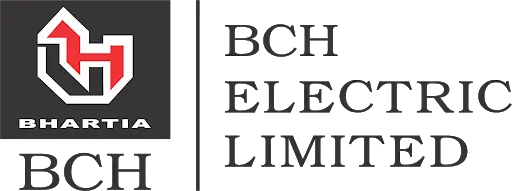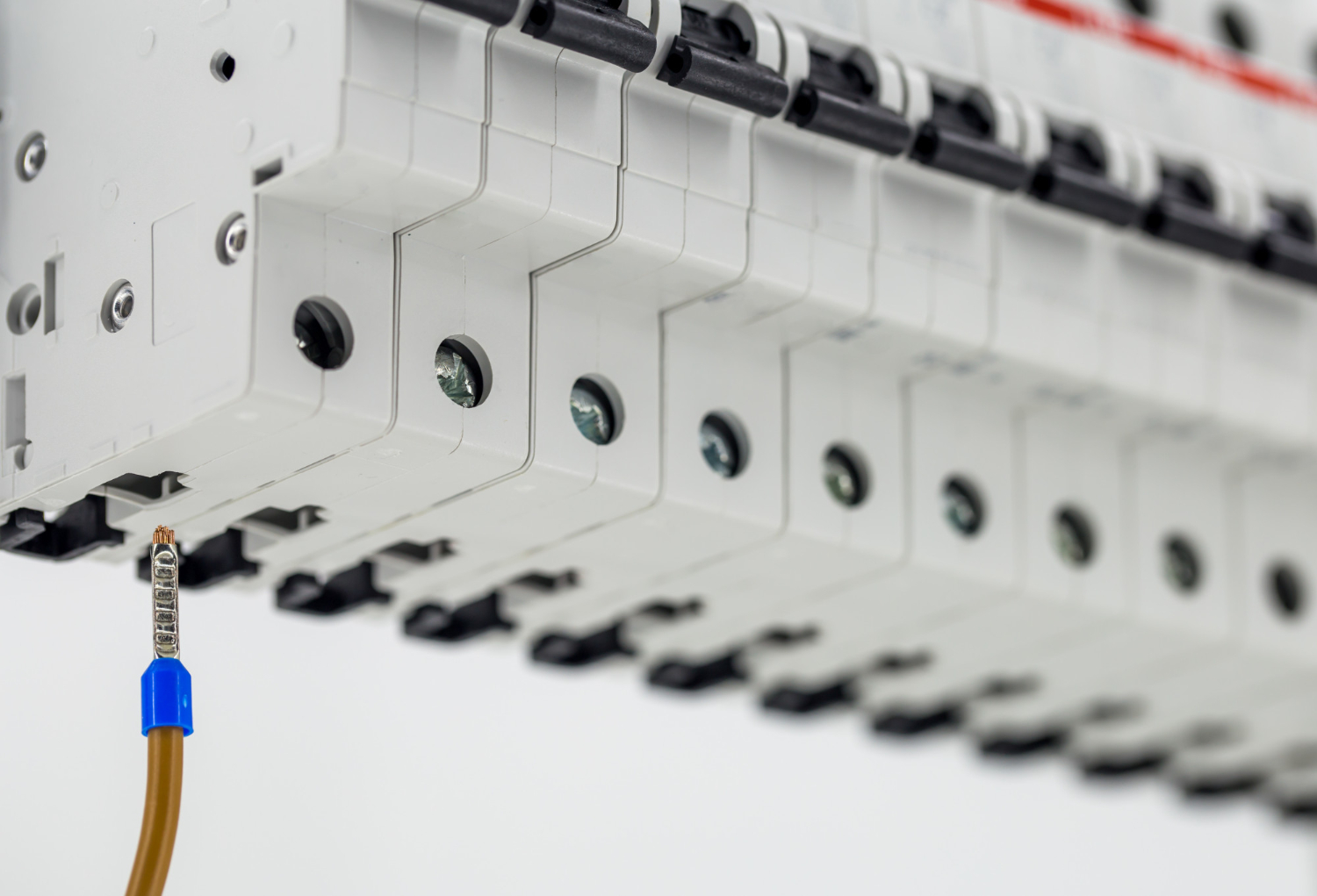Introduction
Electricity is the lifeline of every modern home. From lighting and fans to home entertainment systems, air conditioners, refrigerators, and charging stations, we depend heavily on a stable, safe, and reliable power supply. But what’s often overlooked is the protection layer between your wiring and your electrical appliances. For decades, many homes used fuses (or fuse wires) as circuit protection. Today, the smarter, safer, and more flexible option is the Miniature Circuit Breaker (MCB).
This article explores why modern homes should rely on MCBs instead of fuses, breaking down the technical advantages, safety benefits, cost implications, and practical considerations. Towards the end, I’ll introduce BCH Electric as one of India’s top MCB manufacturers and what makes them stand out.
1. What Are Fuses and MCBs? A Quick Primer
Fuse (Electrical)
-
A fuse is a sacrificial overcurrent protection device containing a metal wire or strip that melts (“blows”) when current exceeds a given threshold, thus interrupting the circuit.
-
Once a fuse blows, it must be replaced (or repaired) before the circuit can be powered again.
-
Fuses are simple, reliable in their basic function, and historically inexpensive.
MCB (Miniature Circuit Breaker)
-
A miniature circuit breaker (MCB) is a reusable electromechanical device that interrupts current flow when it senses an overload or short circuit.
-
It typically uses a combination of a bimetallic strip (for overload protection) and an electromagnetic trip (for short-circuit protection).
-
After tripping, you can reset the MCB (flip it back on) instead of replacing a component.
2. Key Advantages of MCBs Over Fuses
Modern homes have become electrically sophisticated. MCBs offer features and flexibility that fuses cannot match. Below are the major benefits.
2.1 Resettable vs Replaceable
One of the biggest advantages is reusability. When an MCB trips, you simply reset it after fixing the fault. Fuses, on the other hand, are one-time devices — every time they blow, you must replace them.
This reset capability translates to:
-
Less downtime
-
No stocking of spare fuses
-
Easier maintenance for homeowners or electricians
2.2 Precision & Selectivity
MCBs are engineered to have precise current-versus-time characteristics (various curves: B, C, D) so that they trip at defined overloads or short circuits. This makes selective protection possible (i.e., only the faulty circuit trips, not the entire system).
Fuses, in contrast, have fixed melting behavior and are less adaptable or selective.
2.3 Faster Fault Detection & Protection
Though fuses react very fast (in some designs, within a fraction of a cycle), modern MCBs are quite responsive and reliable for residential loads. The advantage of an MCB is that it is consistent and dependable under varying conditions.
An article from Schneider Electric notes that MCBs operate in about 20 ms under short-circuit conditions. Some fuse types may operate faster, but that speed edge is often offset by the drawbacks in usability, safety, and adaptability.
2.4 Enhanced Safety and Protection Features
MCBs also often include or can integrate additional protective features such as:
-
Arc fault detection
-
Ground fault / residual-current protection (in RCCB + MCB combos)
-
Overheat protection
-
Better discrimination in multi-circuit panels
These features are more difficult (or impossible) to implement with fuses.
2.5 Long-Term Cost Efficiency
Though MCBs have a higher initial cost than fuses, the life-cycle cost typically favors MCBs. You avoid repeated fuse replacements, reduce labor costs, and gain better system reliability.
A white paper from C3 Controls even argues that for control systems, circuit breakers (like MCBs) can offer lower total cost when factoring in spare parts, downtime, and maintenance.
2.6 Reliability, Durability, and Indication
MCBs often come with status indicators, mechanical robustness, and the ability to cycle (trip + reset) many times. They don’t degrade in performance as fuses can with age, temperature, and wear.
3. Why Fuses Still Are Used (and Their Limitations)
To present a balanced view, here are reasons fuses persisted and why they fall short for modern homes.
3.1 Why Fuses Were / Are Used
-
Low upfront cost — Fuses are cheap to manufacture.
-
Simplicity — Simple, passive device, no moving parts.
-
Fast operation (for certain types) — Some fuses blow very quickly under fault.
-
Space constraints — In some older electrical panels, fuse holders are very compact.
3.2 Limitations in Today’s Homes
-
Need replacement after every fault — inconvenient and potentially dangerous if done incorrectly
-
No flexibility — fixed protection; cannot easily adjust tripping settings
-
Risk of wrong fuse rating / over-fusing — users sometimes replace blown fuses with wires or higher ratings, compromising safety
-
Lack of advanced protection — cannot support modern safety functions like arc-fault or leakage detection
-
Poor visibility and diagnostics — fuse blow gives no alert or indication mechanism
-
Coordination challenges — in complex wiring setups, fuse coordination is more cumbersome
Because of these limitations, electrical codes and modern installations increasingly favor MCBs or circuit breakers over fuses, especially in residential panels.
4. Key Considerations When Using MCBs in Homes
To make sure your home installation truly benefits from MCBs, here are best practices and technical factors to consider.
4.1 Select the Right Rating and Curve
-
Choose the correct ampere rating matching the load (e.g., lighting circuits, AC, etc.).
-
Understand the tripping curve (B, C, D) depending on the inrush current profile of loads.
-
Ensure breaking capacity (e.g. 6 kA, 10 kA) is sufficient to interrupt short circuits safely.
4.2 Proper Wiring and Coordination
-
Ensure wiring gauge matches breaker rating.
-
Use selective coordination so only downstream MCBs trip, not upstream ones.
-
Maintain proper separation and layout in distribution boards.
4.3 Regular Testing & Maintenance
-
Occasionally test trip functionality (if accessible).
-
Clean contacts and ensure terminals are tight.
-
Replace or upgrade MCBs that show signs of wear, corrosion, or repeated nuisance tripping.
4.4 Use Trusted Brands & Certifications
Always choose MCBs from reputable, certified manufacturers with compliance to standards like IS/IEC 60898-1, IS/IEC 60947-2, and domestic safety certifications. Poor-quality breakers may fail or behave unpredictably under fault conditions.
5. BCH Electric: Leading MCB Manufacturer in India
In positioning a top-tier MCB brand within the Indian market, BCH Electric Ltd. is frequently cited as one of the reliable names in switchgear and circuit protection.
5.1 About BCH Electric
-
Established Legacy & Credentials: BCH Electric is an ISO 9001:2015 & ISO 14001:2015 certified company.
-
Wide Product Range: They offer a versatile range of MCBs tailored for residential, commercial, and industrial applications.
-
Standards Compliance: Their MCBs conform to relevant standards such as IS/IEC 60898-1.
-
Strong Manufacturing Base: BCH operates multiple manufacturing facilities (for example, one in Faridabad since 1967 and another in Rudrapur in 2012) with modern production setups.
-
Performance Specifications: Their MCBs are marketed with features like breaking capacity up to 10 kA, current limiting design, bus-bar terminations, etc.
5.2 Why BCH Makes a Strong Choice for Homes
-
Reliability and Quality Assurance: Being ISO-certified and having decades of industry presence, BCH has built credibility in switchgear manufacturing.
-
Certified Safety Performance: Their adherence to IS/IEC standards ensures that their MCBs deliver the protection performance expected in real-world scenarios.
-
Diverse Product Line: Whether for lighting circuits, heavy appliances, or main distribution, BCH offers different MCB variants (various poles, breaking capacities, curves) to suit multiple needs.
-
Indian Availability & Support: As an Indian manufacturer, spare parts, replacements, and technical support are more readily accessible domestically.
-
Competitive Cost with Value: While MCBs cost more upfront than fuses, selecting a trusted brand like BCH ensures that you’re paying for performance, longevity, and safety — which over time offers better total value.
5.3 Possible Marketing / Differentiation Angles (for a Manufacturer’s Blog)
-
Emphasize “Made in India” with global standard compliance.
-
Highlight R&D, testing, and quality control processes to reassure customers about reliability.
-
Share case studies or customer testimonials of homes or installations using BCH MCBs under demanding conditions (e.g., fluctuating supply, storms, infrastructure stress).
-
Offer installation guides, comparison charts, and support tools to help installers and homeowners choose the right MCB models.
6. Sample Structure for Homeowner Implementation
Here’s a suggested approach for homeowners planning to upgrade or install MCBs in their homes:
| Step | Action | Tips / Best Practices |
|---|---|---|
| 1 | Audit loads & circuits | List all appliances, wattages, and likely current draw |
| 2 | Determine required MCB ratings | Use standard safety margins, consider inrush current for motors/AC |
| 3 | Choose appropriate tripping curves | Use B for resistive loads, C or D for inductive/AC loads |
| 4 | Define coordination and selectivity | Ensure only local MCB trips, not main |
| 5 | Procure quality MCBs | Prefer trusted brands like BCH, ensure certification |
| 6 | Professional installation | Use a qualified electrician |
| 7 | Test & maintain periodically | Trip test, check for magnetism/looseness |
7. Addressing Common Objections & Concerns
-
“Fuses are cheaper, why pay more?”
The higher initial cost is offset by long-term savings in replacements, downtime, and safety. In fact, circuit breakers generally deliver superior life-cycle value. -
“What about speed — fuses blow faster?”
While some fuses are extremely fast, modern MCBs operate fast enough for typical household fault levels. Also, the consistency, reset ability, and protection features of MCBs outweigh marginal speed advantages. -
“Are MCBs more complex or failure-prone?”
Any device with moving parts needs proper design and maintenance. Trusted brands like BCH follow rigorous testing and quality standards to ensure reliability. The ability to reset (instead of replacing) also reduces handling risk. -
“In rural or low-voltage areas, will MCBs work reliably?”
Yes — as long as the MCB’s voltage and current ratings suit local supply conditions, the protection features remain beneficial. In fact, in unstable supply regions, the resilience of MCBs becomes even more valuable.
8. Conclusion & Call to Action
In summary, for any modern home, switching from a fuse-based protection scheme to MCBs is a forward-looking decision. The advantages are clear:
-
Resettable and reusable
-
Better selectivity and precision
-
Enhanced safety and add-on protections
-
Long-term cost efficiency
-
Reliable performance under varied conditions
If you are planning a new home electrical setup or upgrading an existing one, consider MCBs as your primary circuit protection device.
When it comes to selecting a brand, BCH Electric stands out as a trustworthy Indian manufacturer offering high-quality, standard-compliant MCBs suitable for homes and beyond. Their product performance, manufacturing pedigree, and local support make them an excellent contender for any residential installation.


